
Unlike Solo, Pekalongan, Yogyakarta, Cirebon or Lasem, Jakarta is not on the radar when we think of batik-producing regions. At least, it’s no longer on the radar, as Jakarta was once one of the main hubs for batik-making, complete with its own motifs and styles. / Photos by Begies Imanda.
Having almost gone completely extinct within the city, there are but a few boutique producers within the city, aimed at ensuring the craft remains present in Jakarta, and that the city’s own batik Betawi remains relevant.
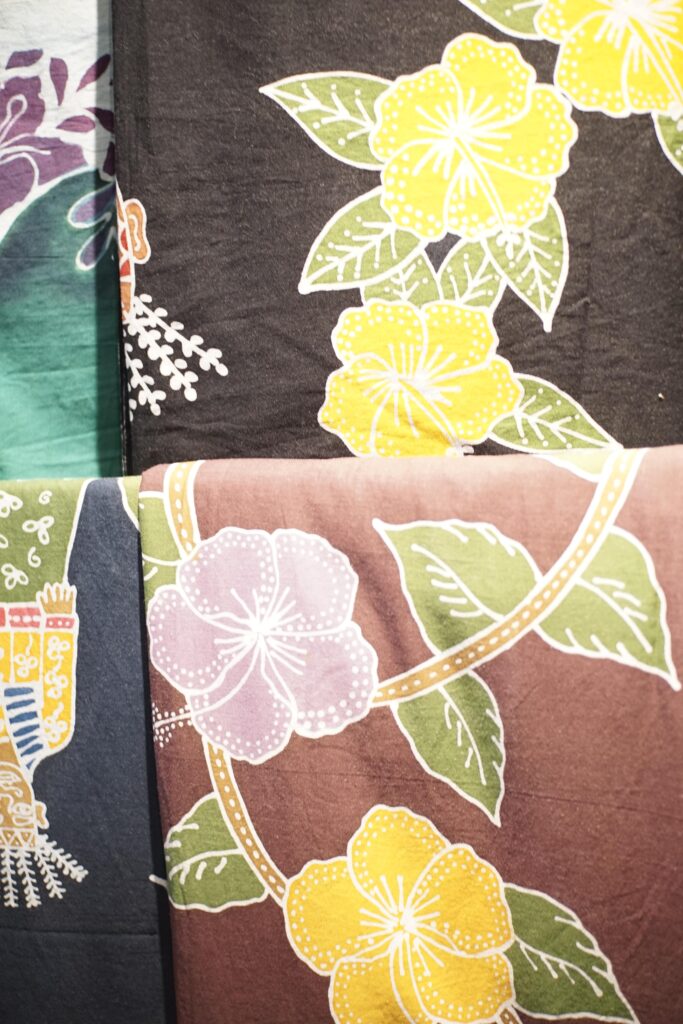
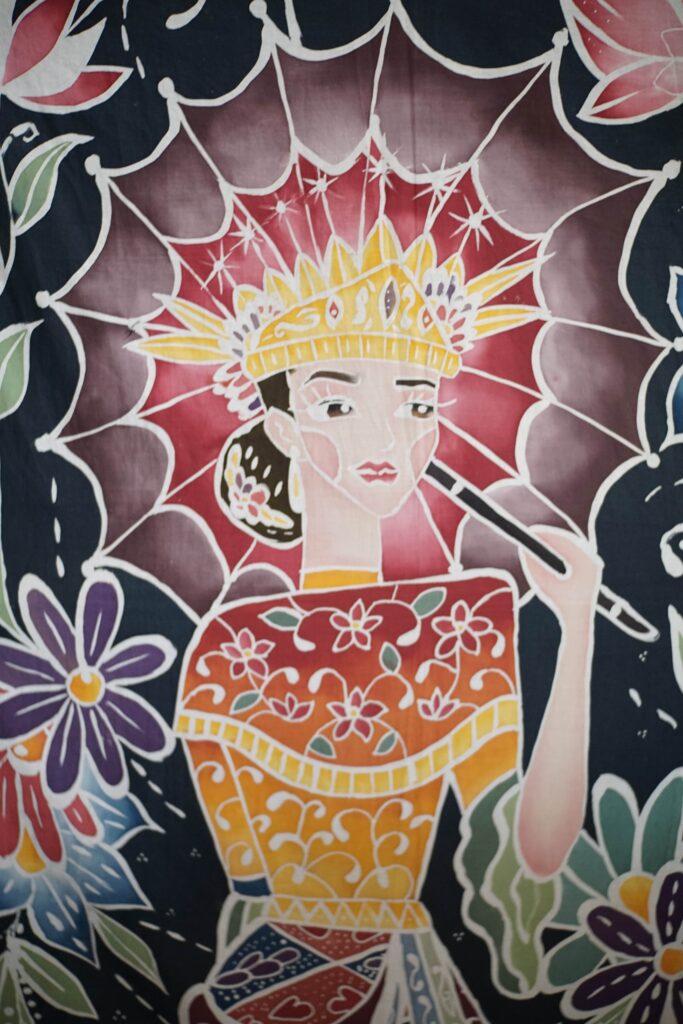
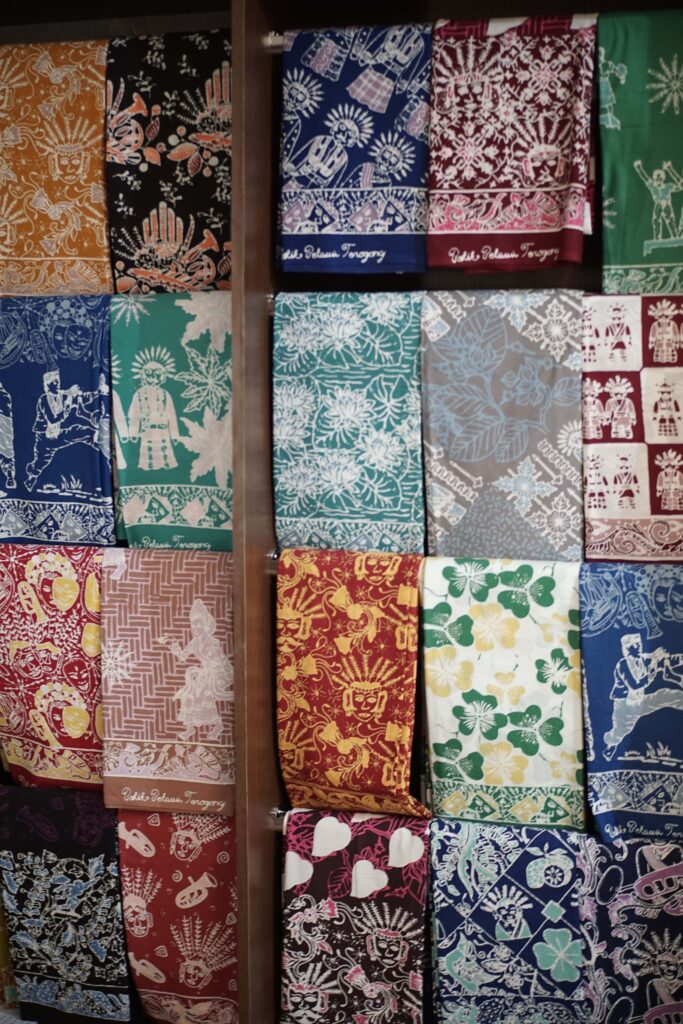
Jakarta’s Batik-Making History
The city was once bustling with batik producers in the 1900s until it declined significantly towards the end of the 20th century, as Jakarta began to develop and urbanise. Bendungan Hilir, Karet, Palmerah, and Kebayoran Lama, were once all batik-making regions, but the issuance of new regulations prohibited the existence of textile industries within Jakarta, due to how much factories were polluting the environment.
The batik makers thus moved to Tangerang, Cibitung, Cikarang, and East Karawang, leaving no batik makers in old town Betawi. Jakarta turned into a centre for batik trade from regions outside Jakarta. With no producers from Jakarta, the Betawi batik motif also declined, drowned out by the popularity and abundance of batik from Pekalongan, Solo, Yogyakarta, and Semarang.
On 2 October 2009, UNESCO officially designated batik as an Intangible Cultural Heritage of Humanity. It was recognised because it is made with techniques, has symbolism, and culture that is inseparable from Indonesian culture and identity. This is why on 2 October Indonesia celebrates National Batik Day. UNESCO’s recognition of batik became a spark of enthusiasm and hope for a handful of people looking to revive batik making in Jakarta. These are not factories, of course, but home-scale batik artisanal centres, founded by those with a passion to preserve the culture of batik in Jakarta.
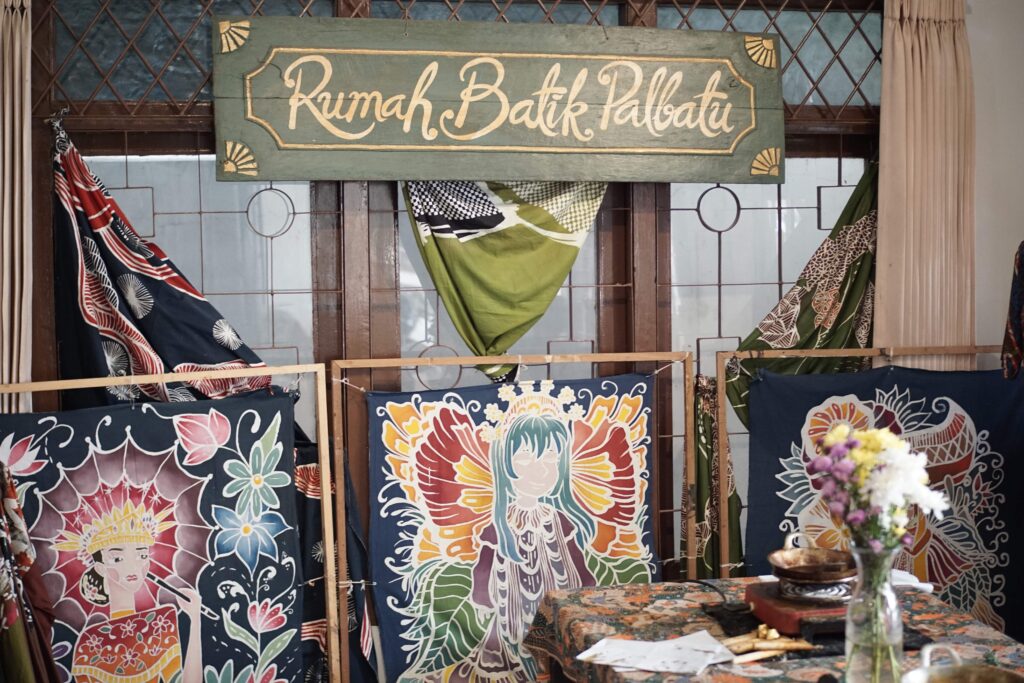
Rumah Batik Palbatu
Located between Tebet and Kuningan, Rumah Batik Palbatu in South Jakarta was founded by Budi Dwi Haryanto (Hari) and his friends in 2011. In fact, their initial idea was to create a village-wide movement, Palbatu Batik Village, as way to showcase batik in Jakarta and help the local community. An entire district decorated in batik motif, awarded with records like a Indonesian World Records Museum (MURI) for having the longest street with batik motif, estimated to be 133.9 meters. It also holds the record for having the most numbers of houses painted with batik patterns.
Having changed tack and scaled down the movement, what remains is Rumah Batik Palbatu, now a cultural hub that facilitates a fully-equipped studio for those who want to learn and create a textile masterpiece, especially batik with contemporary and modern motifs. Uniquely, in all activities carried out in this batik house, be it education or batik production, it empowers and involves partners, people with disabilities and cancer survivors, also residents in the surrounding area.
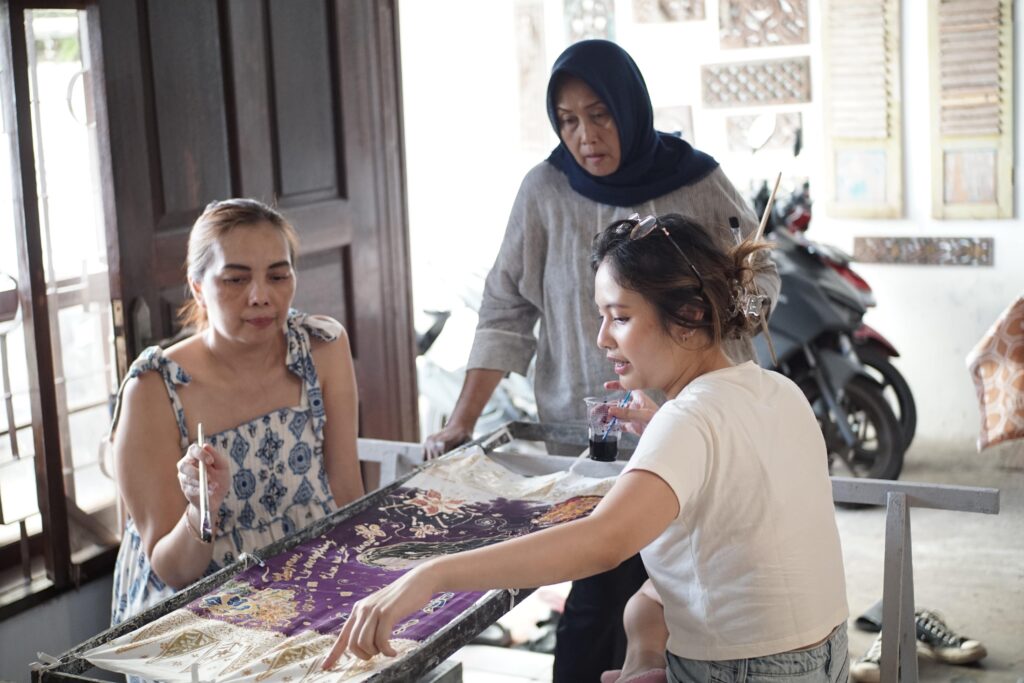
Here, both beginners and experienced visitors, can enjoy a quality workshop about batik and other textiles through its programs and training, from batik making techniques and produce fabrics that suit the tastes of all groups, especially young people.
This batik centre hopes to foster a great awareness of batik as a process, and not simply as a motif or textile. This is, after all, why it was recognised by UNESCO. Hari directs young people to create batik with motifs they love first and encourages them to improve their batik skill to the next level until they fully-understand the process of making batik and can distinguish between authentic and imitation batik.
For basic workshops, this is priced at IDR 250,000,-
Rumah Batik Palbatu
Jalan Palbatu 1 No. 6, Menteng Dalam
+62 858 9128 8275, +62 856 8154 723
rumahbatikpalbatu.com

Batik Betawi Terogong
Siti Laela and her family members learned about batik Betawi through an initiative organised by DKI Jakarta Government through the Betawi Cultural Institute (LKB). After learning the techniques she then established Kampung Batik Betawi Terogong on 5 September 2012.
Being Betawi herself, Laela wants to revive the Betawi batik that once thrived in her surroundings, as well as to safeguard her village, Terogong. Sandwiched between Pondok Indah and Fatmawati, Terogong is an area constantly targeted by property developers, but if it can become a cultural centre Laela believes she can give real purpose and meaning to the area.
In addition to that, Laela also aims to help mothers provide additional income for their families, inviting them to become batik artisans from their home. Both Jakarta residents and local and foreign tourists are invited to learn about the batik making process here.

As you enter Laela’ house, you will be warmly welcomed by various beautiful Betawi batik motifs. Through her batik creations she wants to tell a story of Jakarta’s past, how it was once lush and that as a child she could climb the trees around her village. She incorporated some of the flora that grew in her beloved city, some of which is rarely seen these days, into the motifs, such as mengkudu (Indian mulberry), pihong (water henna), and jali-jali (Coix lacryma-jobi) trees. Visions of nostalgia, immortalised in cloth. The workshop participants can also learn how to make the authentic Betawi batik motifs, like Laela’s artworks.
The batik workshop package costs IDR 150,000,- for three hours. You can take home your batik creation. To join the workshop, reservation is a must.
Kampung Batik Betawi Terogong
Jalan Terogong III No. 27C 9, RT 9 RW 10, Cilandak Bara
+62 858 8316 3449
batikbetawiterogong.com






